Expository Writing Graphic Organizer 4th Grade
Learning to navigate instructional and expository texts can be a challenge for beginning readers. Students with limited exposure to formal education, students with learning disabilities, and English Language Learners may also have a difficult time identifying the structure of the text and comprehending material with content-specific vocabulary. Providing students with direct instruction, as well as scaffolded instruction in these skills, will increase comprehension, improve recall of material, prepare students for note-taking, and aid in the development of research skills.
Expository Text Structure
Expository texts typically follow one of five formats: cause and effect, compare and contrast, description, problem and solution, and sequence. Students can learn to recognize the text structure by analyzing the signal words contained within the text.
Expository Text Signal Words
This chart can be used by students to help them determine the text structure. Students can highlight or cross off words as they read. Scaffold the instruction by first working as a whole group on the board. Once students are comfortable with the process, have them work in small groups or in pairs until they are ready to work independently.
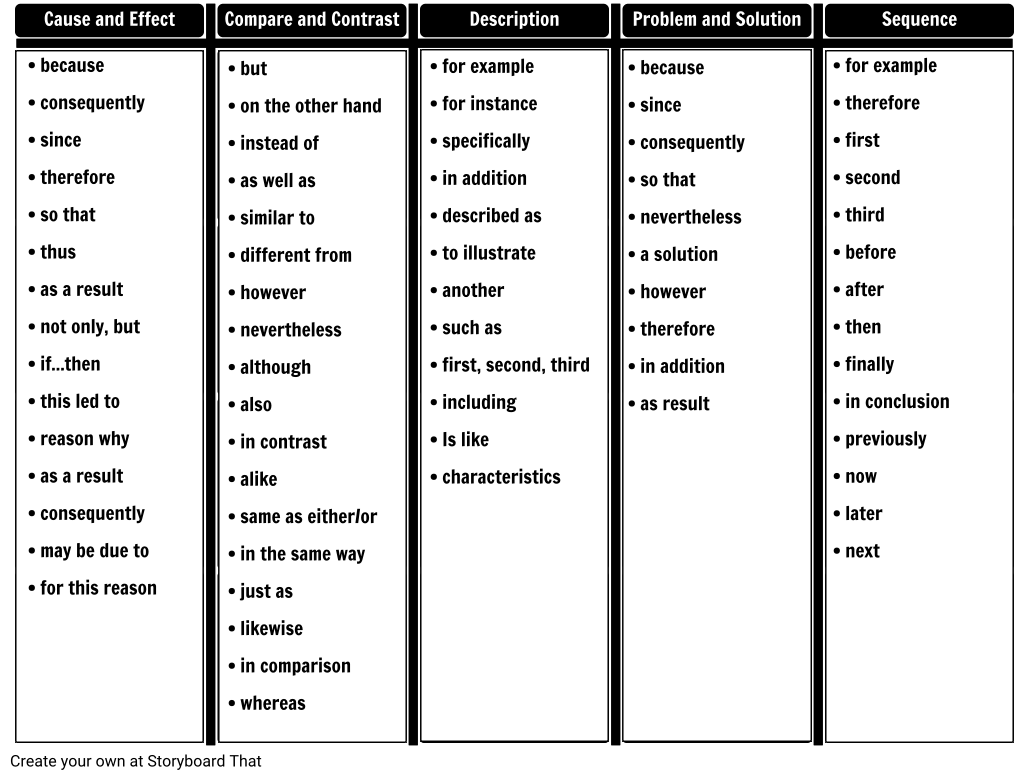
Once students have determined the text structure, they can use one of five graphic organizers created on Storyboard That to organize the information presented in the chapter. These activities will help students identify the focus of a chapter, make connections, and improve recall.
1. Cause and Effect
Students identify the cause of events, actions or ideas presented in a chapter or section.
Cause and effect can be very straight forward in some texts while in others, it is more implicit and will take more work for students to tease out the information. The cause and effect of events such as war, described in a history text may be more linear than the cause and effect of scientific discoveries, such as vaccinations described in a science text. Although the content and organization will vary, the text structure remains the same and can be broken down and organized into its most basic and therefore, more easily understood, components.
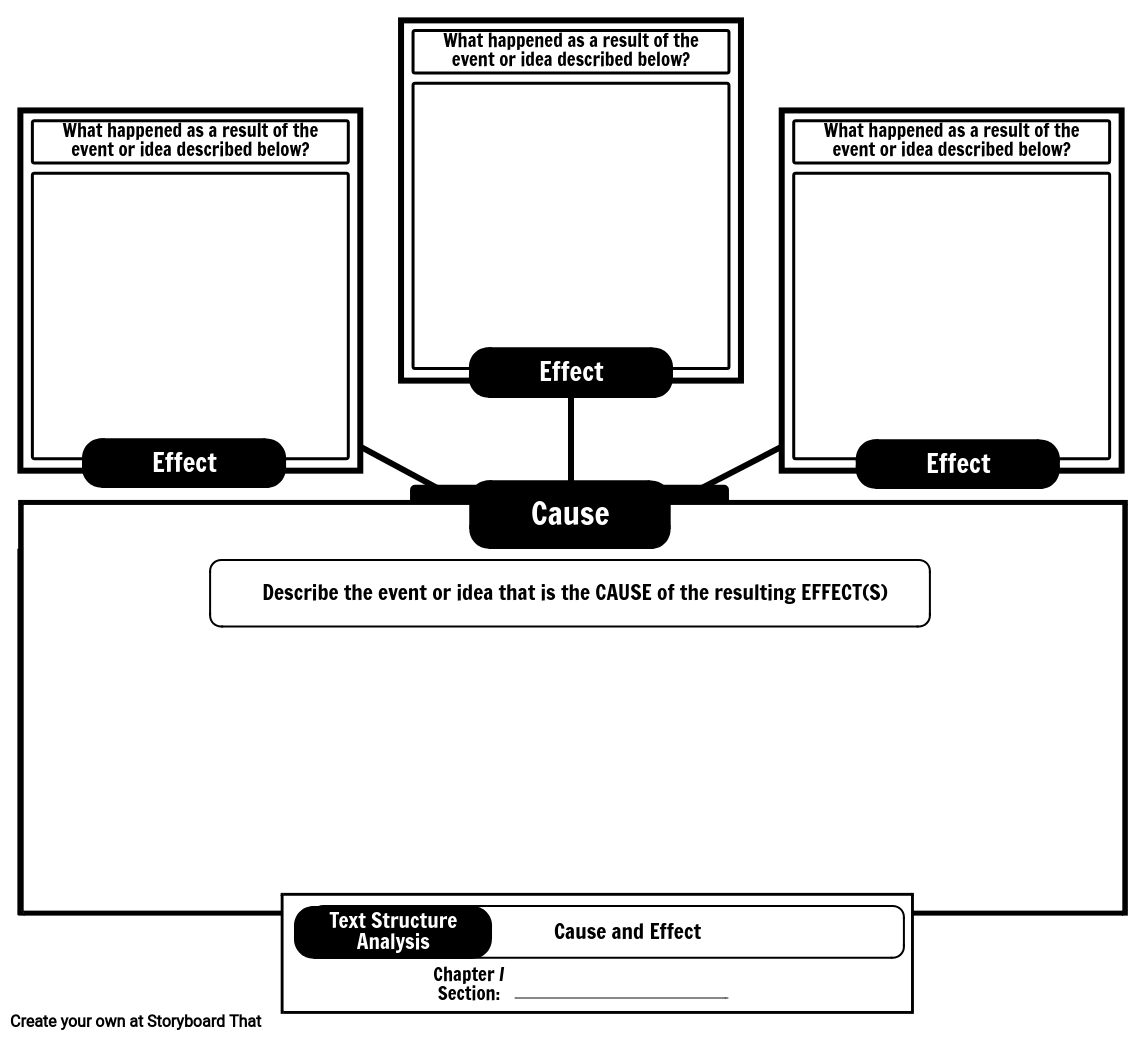
2. Compare and Contrast
Students identify the similarities and differences between two or more events or concepts.
In history class, students are often expected to be able to identify the differences between two time periods, the similarities and differences between two cultures, wars, leaders, or artwork. When teachers present this information, they do so in a way that makes the information accessible and relevant to the unit. When texts present this information it may be a little more muddled. Providing students with a way to organize the data will increase recall and retention while also increasing their ability to identify the text structure in future instances. This same strategy can be applied to comparing events or procedures in science and math.
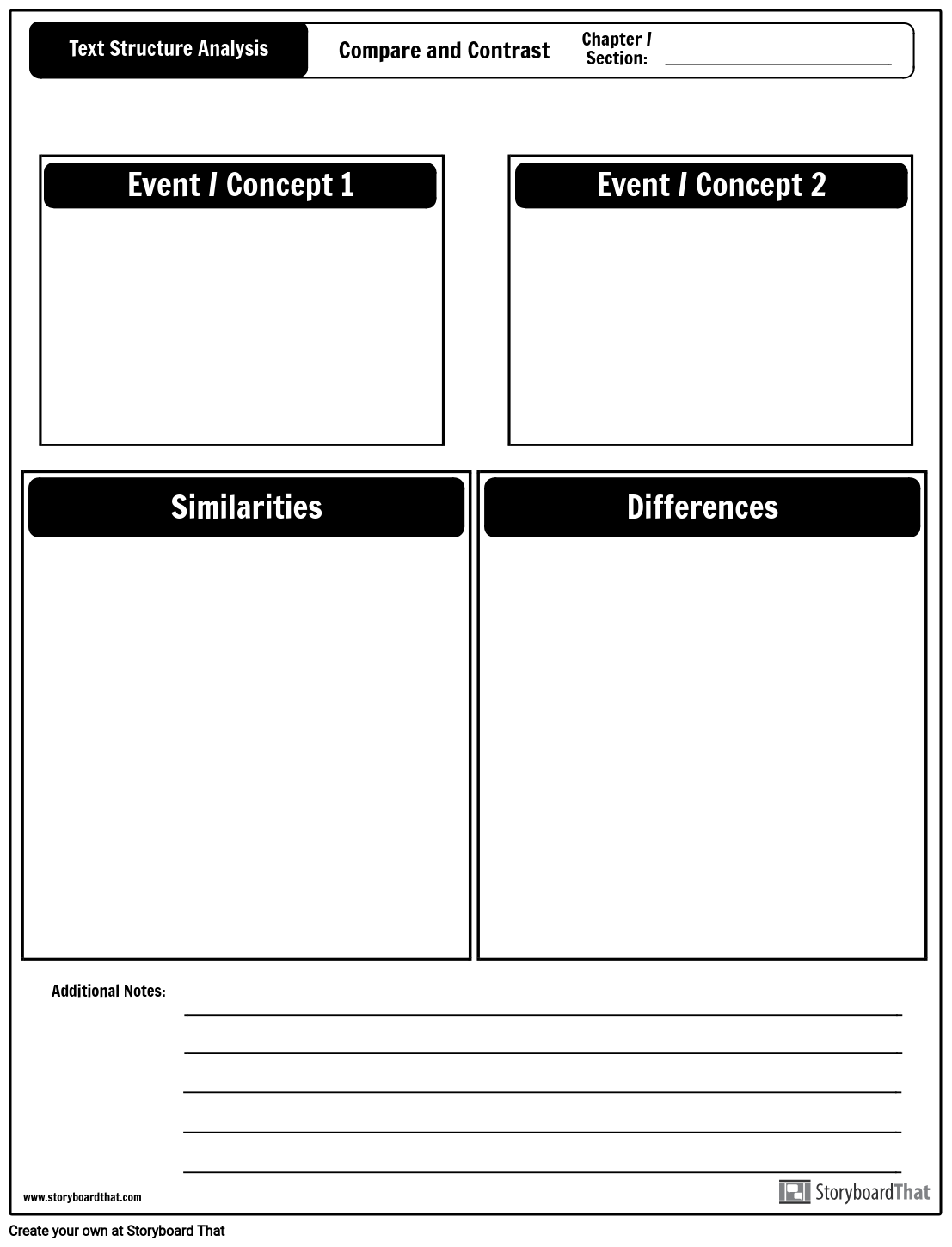
3. Description
Students describe a topic by identifying and explaining its characteristics, features, attributes, and by providing examples.
When a text spends time describing a particular person, event, time period or object, students can lose the facts in the words. Organizing the key details will provide students with a visual aid and quick reference and increase their ability to retain the information presented in the text.

4. Problem and Solution
Students identify the problem and one or more solutions to the problem as described in the chapter or section.
Texts that are framed around a problem and its solutions come in all forms. History texts will often identify a problem that occurred, and then outline or describe the various efforts that were made to solve the problem. Science texts can define specific problems and their solutions. The arts and humanities will also define problems and outline potential solutions. Because the problems and solutions may be less explicit in some texts, it is beneficial for students to organize the information in this way so that they have a clearer understanding of the concept as a whole.
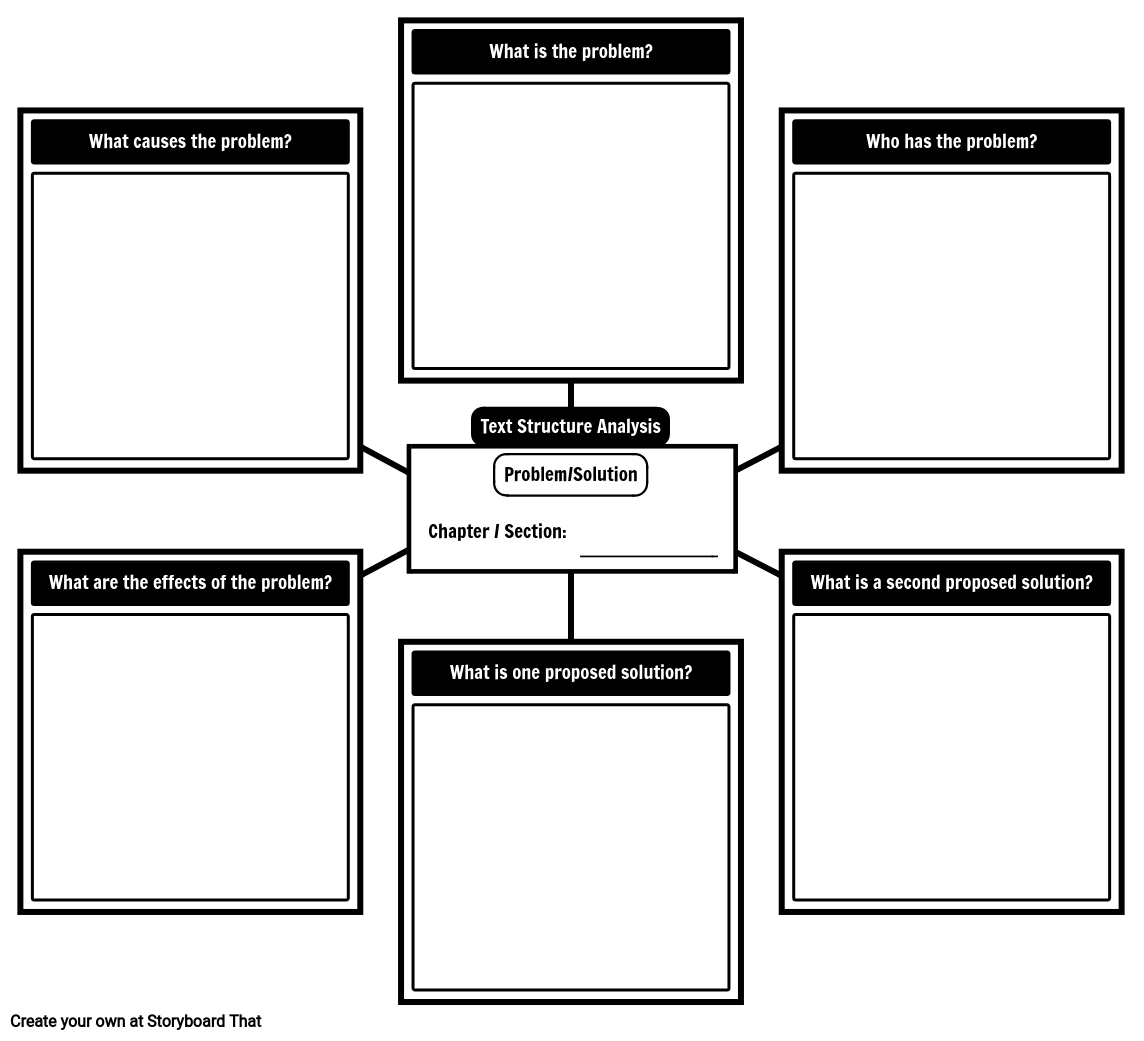
5. Sequence
Students identify and describe items or events in sequence.
Sequences can be implicit or explicit. Step-by-step procedures, math, and science texts will typically state a sequence explicitly. Other texts, such as history or literature, may have an implicit sequence. Helping students to identify the sequences contained within a text will increase comprehension and retention of the information.

Content Exploration
In addition to identifying and comprehending the text structure, students must also learn how to interpret the content and text features. Mastering content-specific vocabulary, learning how to identify the main idea of a text, summarizing a text, and interpreting the images and figures contained in the text are critical to comprehending the material.
Analysis of Text Features
The semantic feature analysis uses a grid to help students organize information, make connections, and clarify concepts. This activity improves comprehension, vocabulary skills and content retention. The semantic feature analysis can be used before, during, or after reading. The instructor may choose to provide the features and category or terms, or to make it more challenging, leave some or all of the categories blank. Using Storyboard That, this semantic feature analysis chart can easily be edited to meet the needs of any classroom or text, and provides the flexibility necessary for instructors to scaffold instruction.
Examples of text features include:
- Titles
- Headings
- Subheadings
- Bold Print / Key Terms
- Pictures
- Graphs
- Charts
- Diagrams
- Maps
- Examples
- Text Excerpts
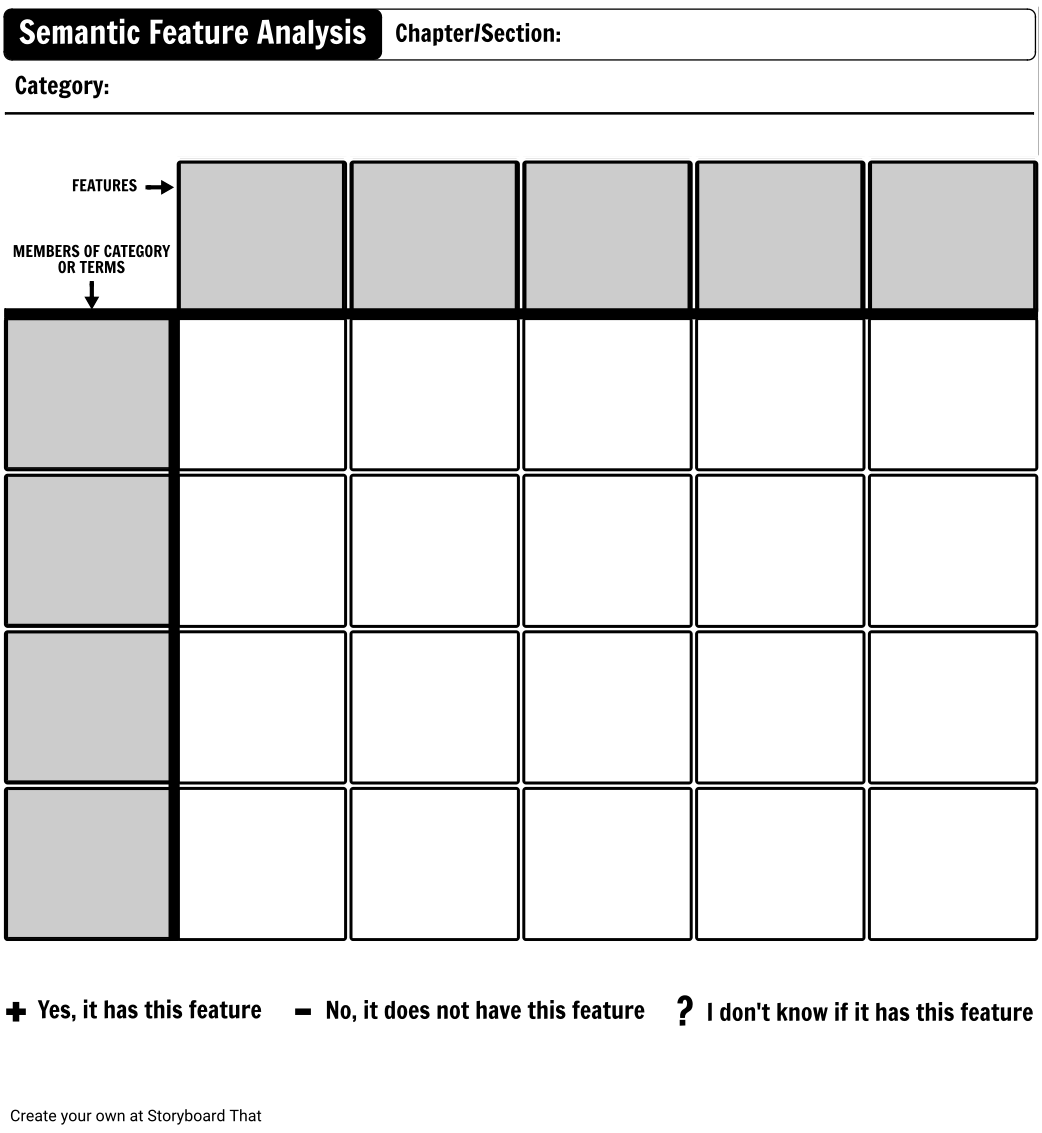
Identifying Main Idea
Identifying the main idea or central idea of a text is a crucial component of reading comprehension and analysis. Developing this skill increases comprehension, increases information retention and prepares students for writing expository essays.
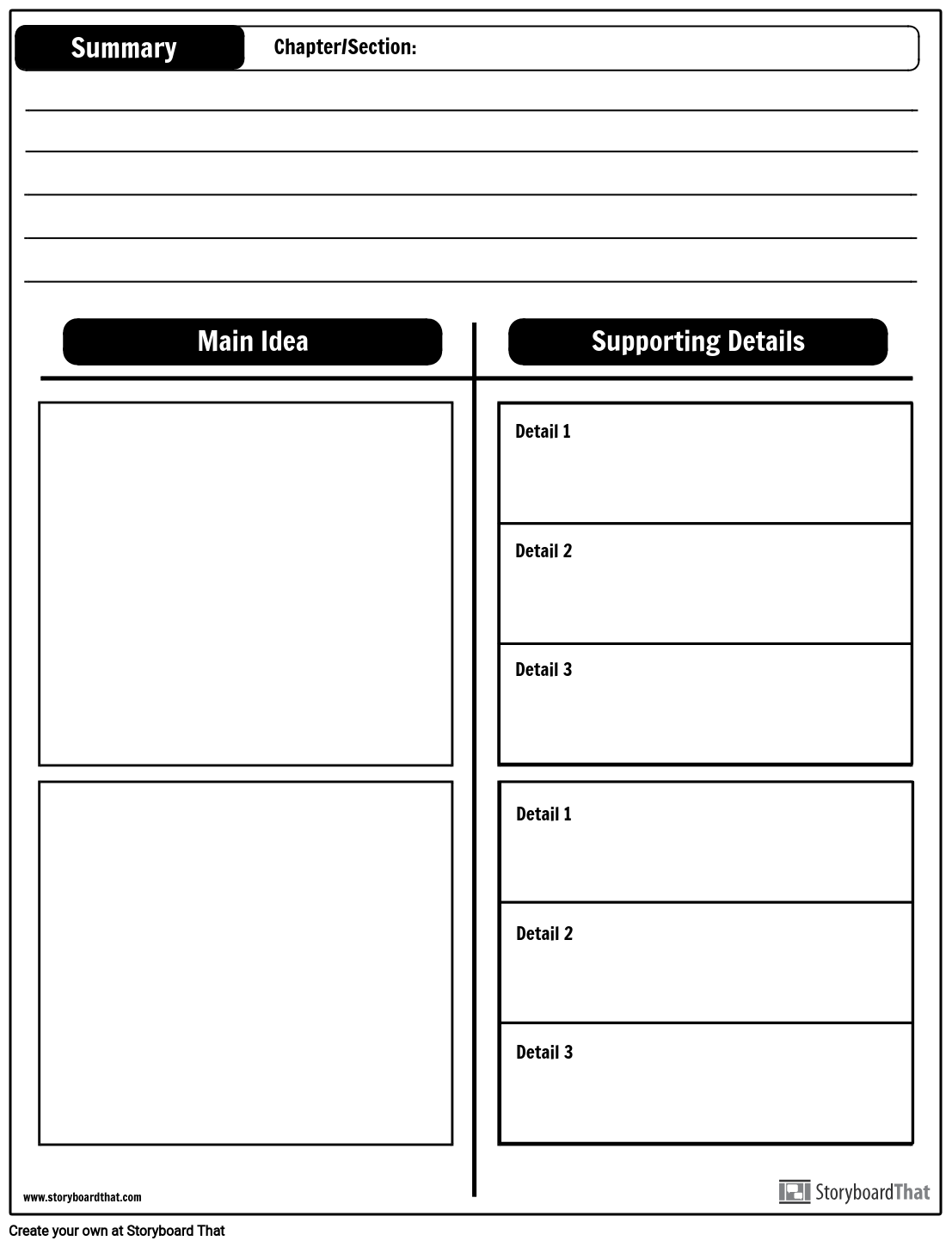
Figure Review
Interpreting the images, charts, graphs, and other figures contained within a text can improve comprehension. The figure review is a great way to preview a text or it can be completed while students read.
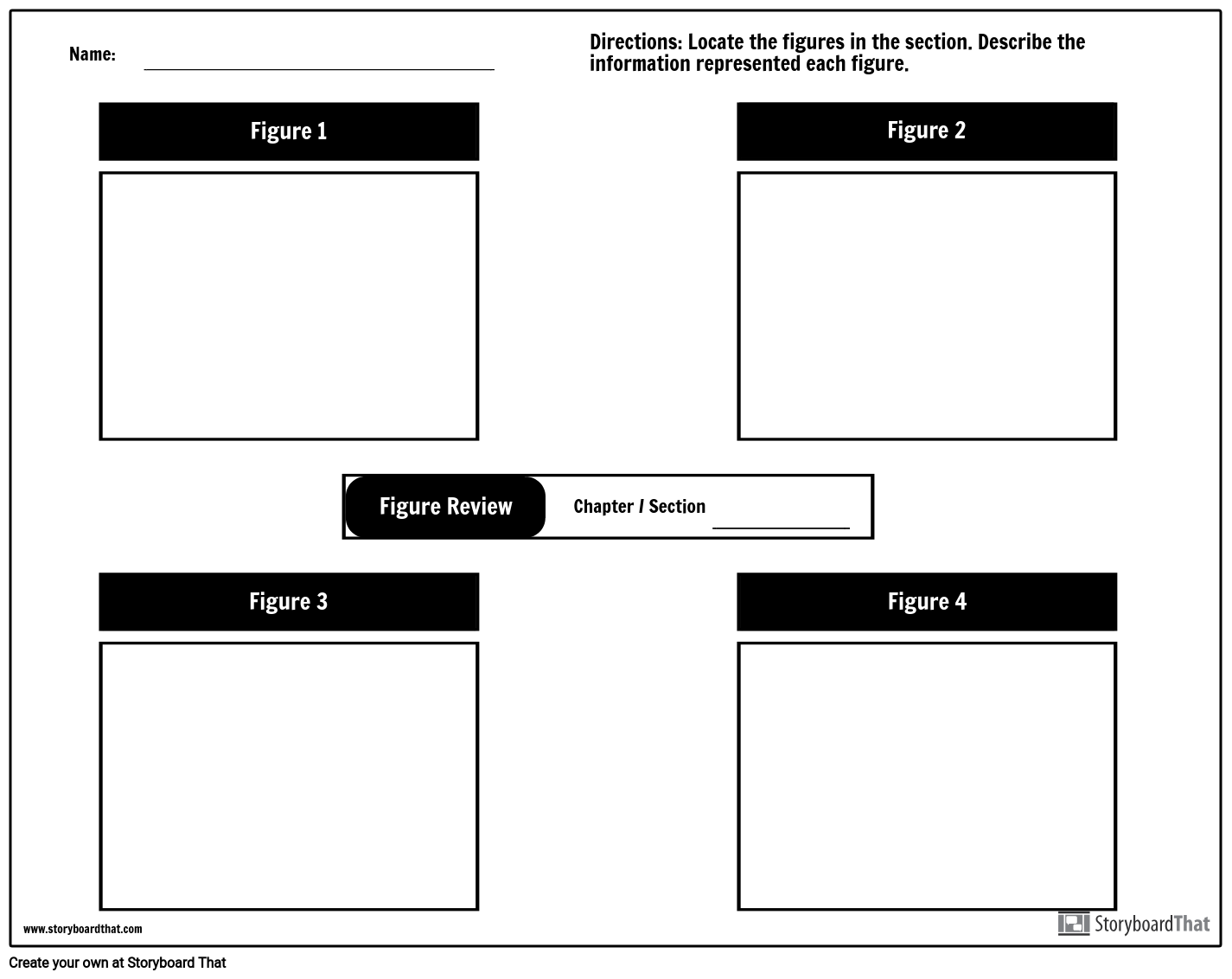
Expository Writing Graphic Organizer 4th Grade
Source: https://www.storyboardthat.com/articles/e/informational-text-activities
Posted by: edwardshimpat.blogspot.com

0 Response to "Expository Writing Graphic Organizer 4th Grade"
Post a Comment